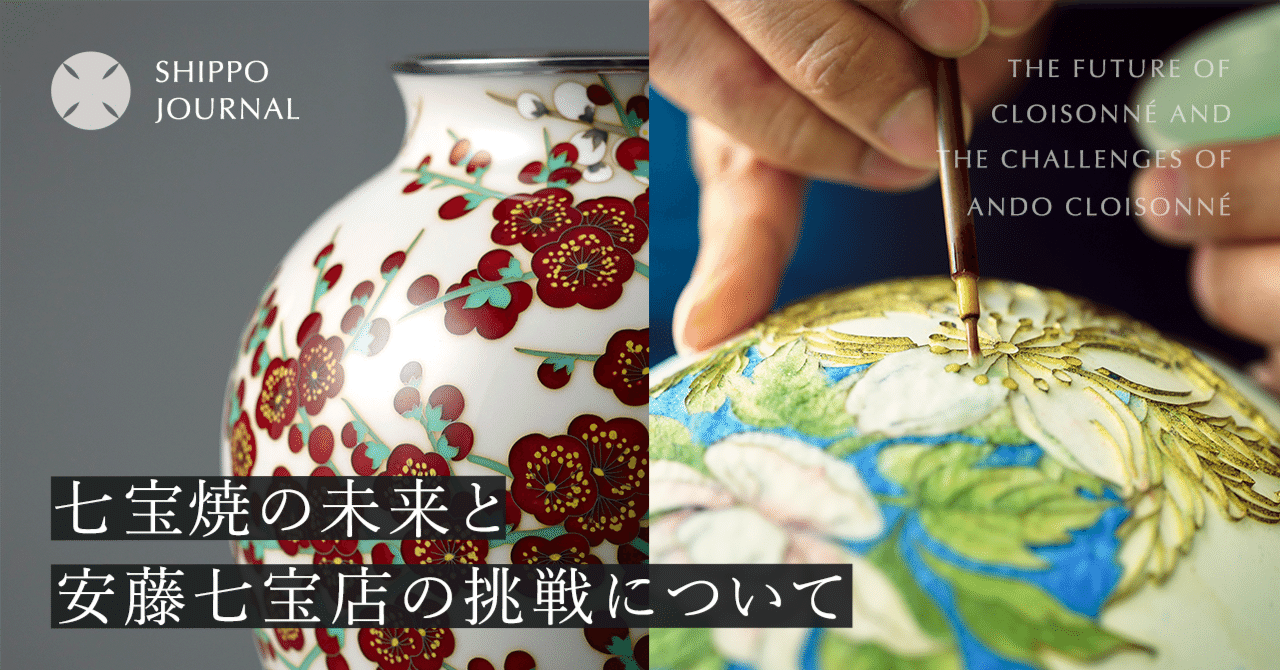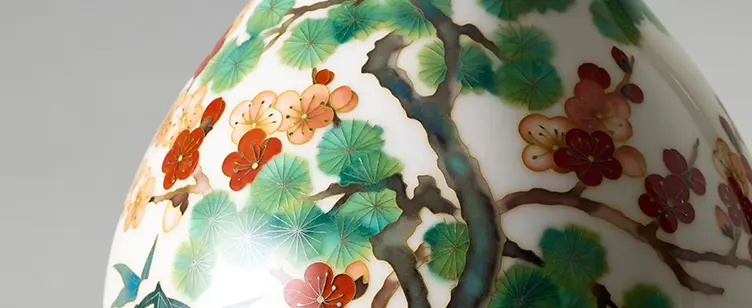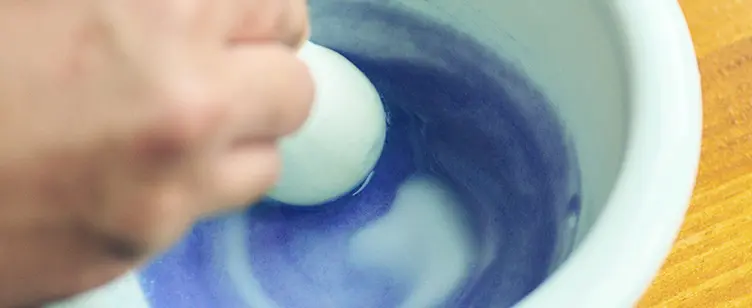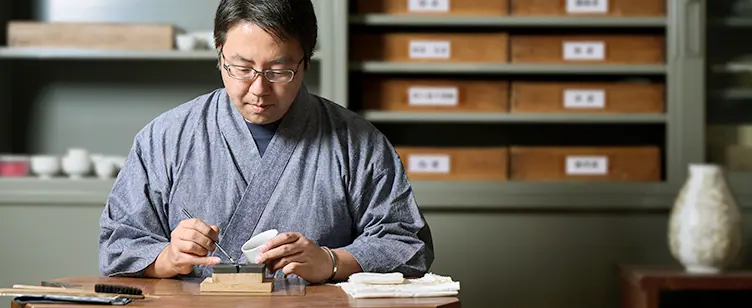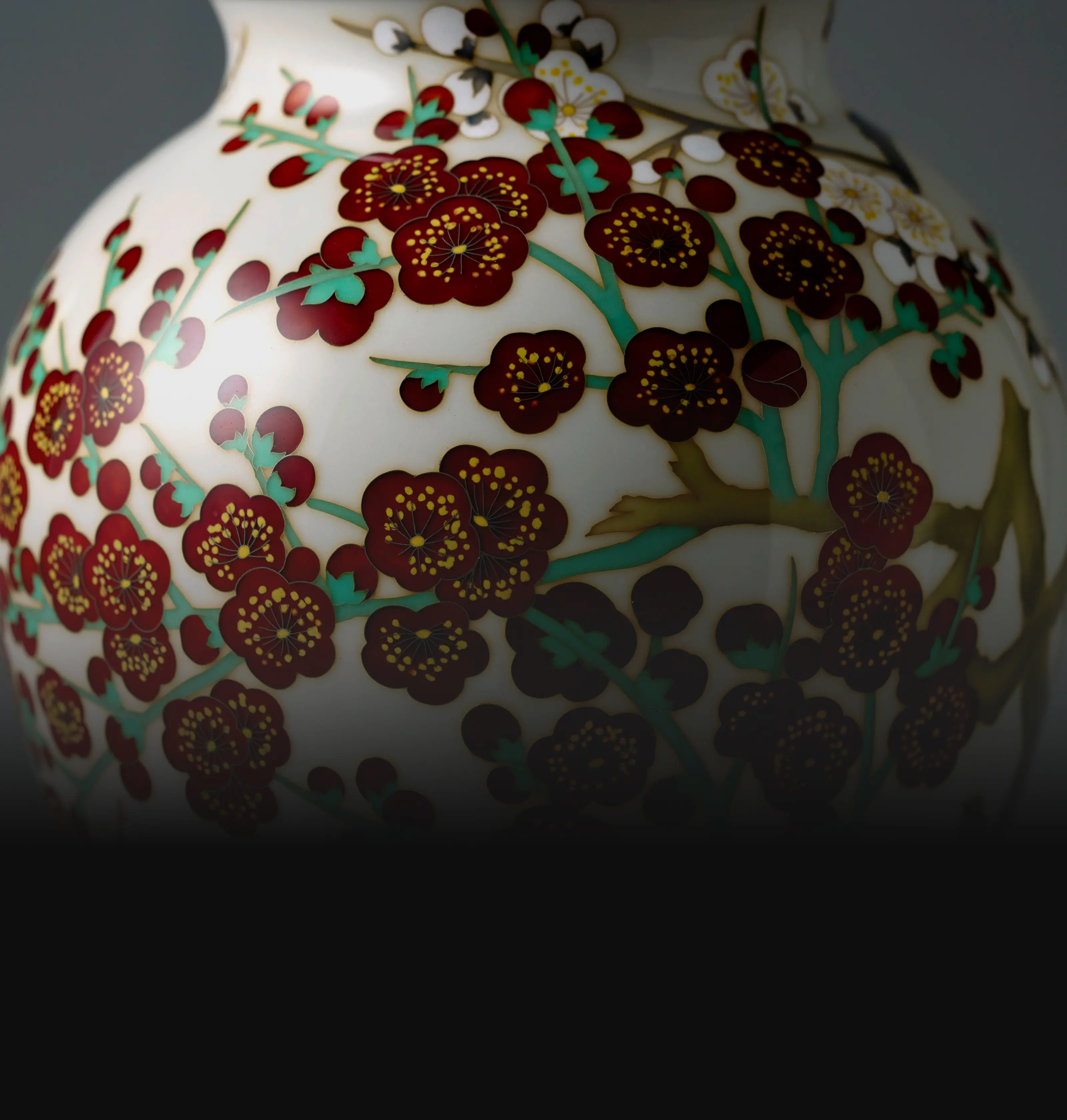Expanding the Possibilitiesof Cloisonne with Pioneering and Innovative Techniques
Craftsman Dialogue 02
Electrocasting
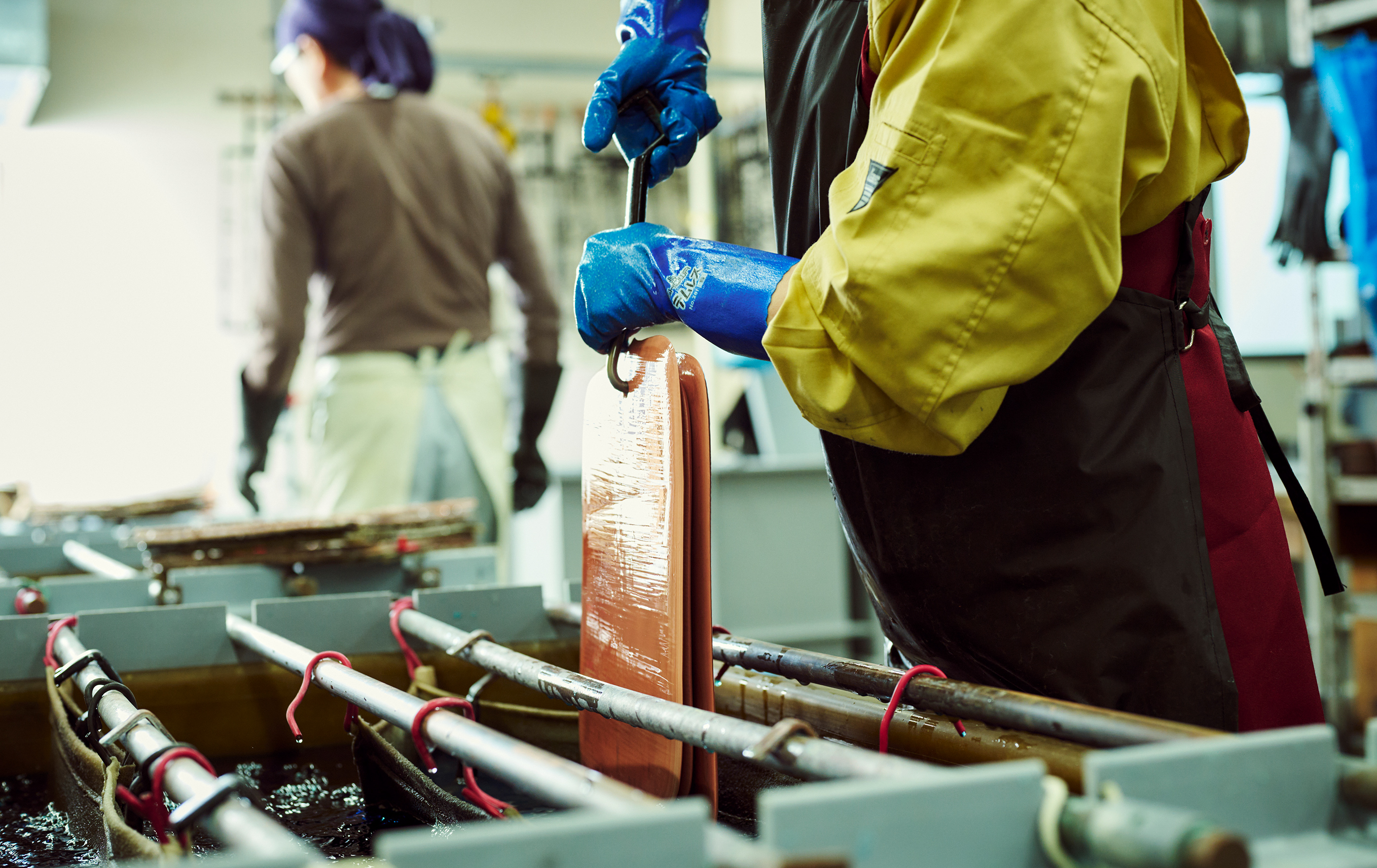
When crafting numerous cloisonne pieces, the essential process of shaping the base is electrocasting. This process involves adhering metal to a prototype surface through the chemical reaction of electrodeposition, and the base mold is then extracted. The most significant feature lies in its ability to faithfully replicate intricate patterns. In a workshop reminiscent of a chemical plant, the artisans breathe life into their creations with passion and curiosity.
Harnessing the Power of Plating to Add Thickness and Shine to Metals
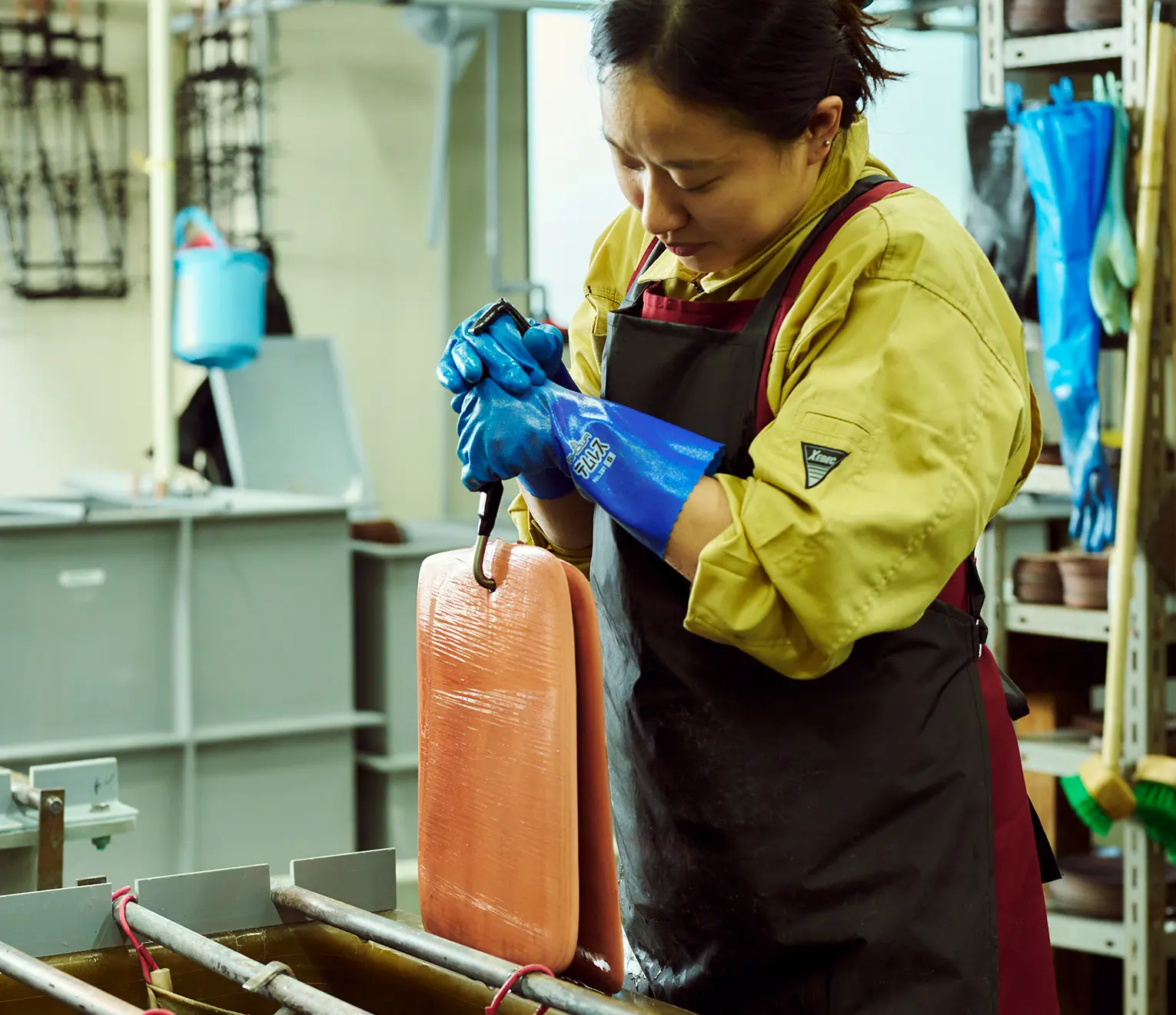
In the workshop, rows of tanks known as electroforming tanks, flowing with electric current, stand side by side. Lifting hooks immersed in the tanks reveal metal plates shaped like extended fans, from which a coating is meticulously peeled off—unveiling the prototype of a small dish adorned with intricate patterns.
"When a patterned silicone mold is sprinkled with conductive powder and suspended in an electroforming bath, the electroplating reaction causes electrolyzed copper to adhere, creating a metal mold with inverted relief. This metal mold can be used to produce multiple molds, allowing for the production of several base materials and enabling mass production," explains Yoshida, who is in her first year with the company. Although she studied art in college and worked on cloisonne production, she was unfamiliar with the electroforming process until joining the company.

The base material removed from the mold typically becomes small dishes with few curves. The process that follows involves sequentially plating the surface with nickel and silver, and finally, washing it with water. "The challenge in plating is whether you can completely remove the initial dirt," says Hanma, Yoshida's mentor. Hanma's career as an electroforming and plating technician spans over 35 years.
Kirinsu processing uses acid to clean the surface, but it can dissolve the pattern if the piece is left in the chemical solution for too long. Determining the appropriate duration and concentration requires a significant amount of experience and intuition. Hanma, formerly in the unrelated plating industry, joined Ando Cloisonne, motivated by a shared vision for passing on craftsmanship.
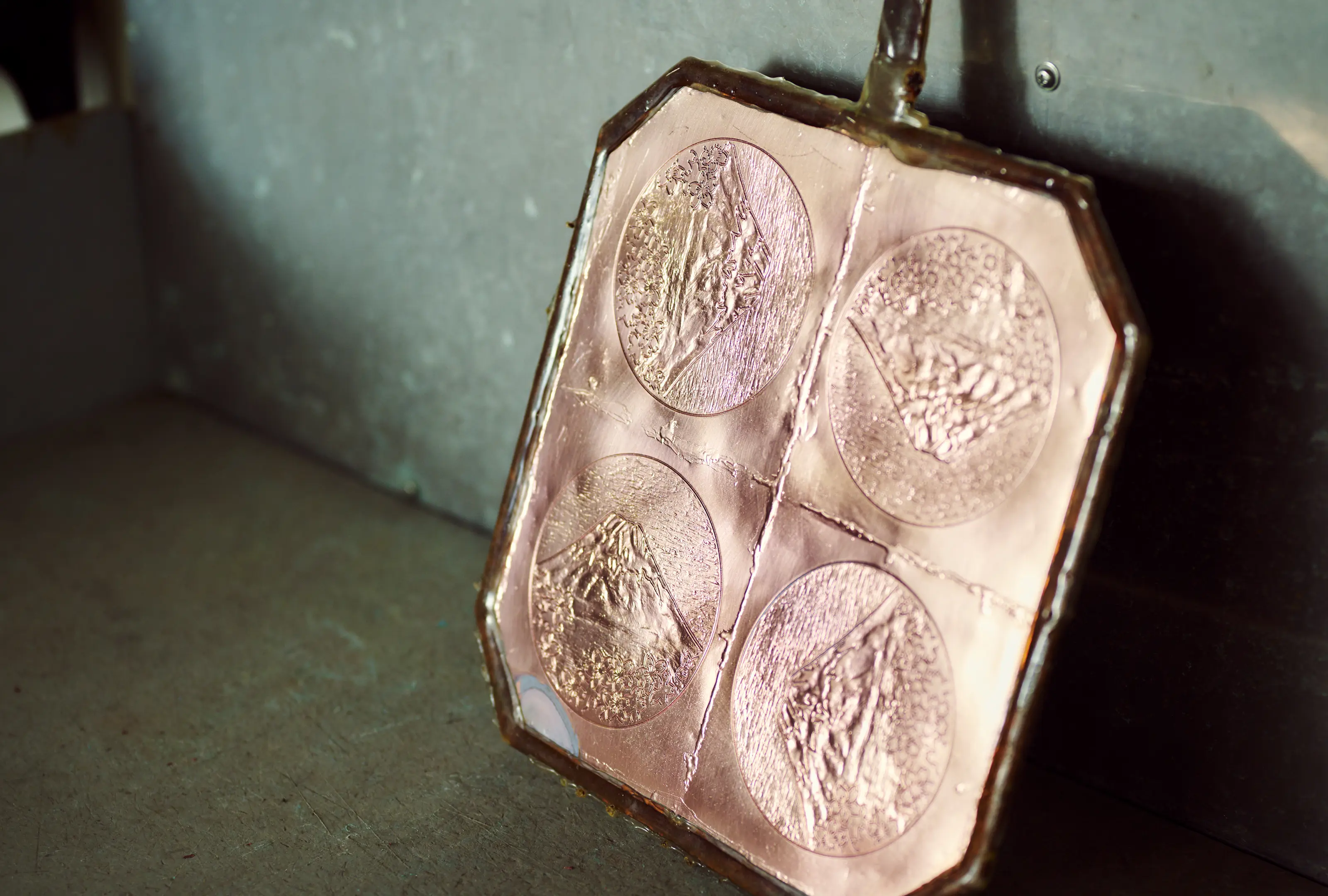
Artisan Skills Passed Down Beyond Mere Calculations
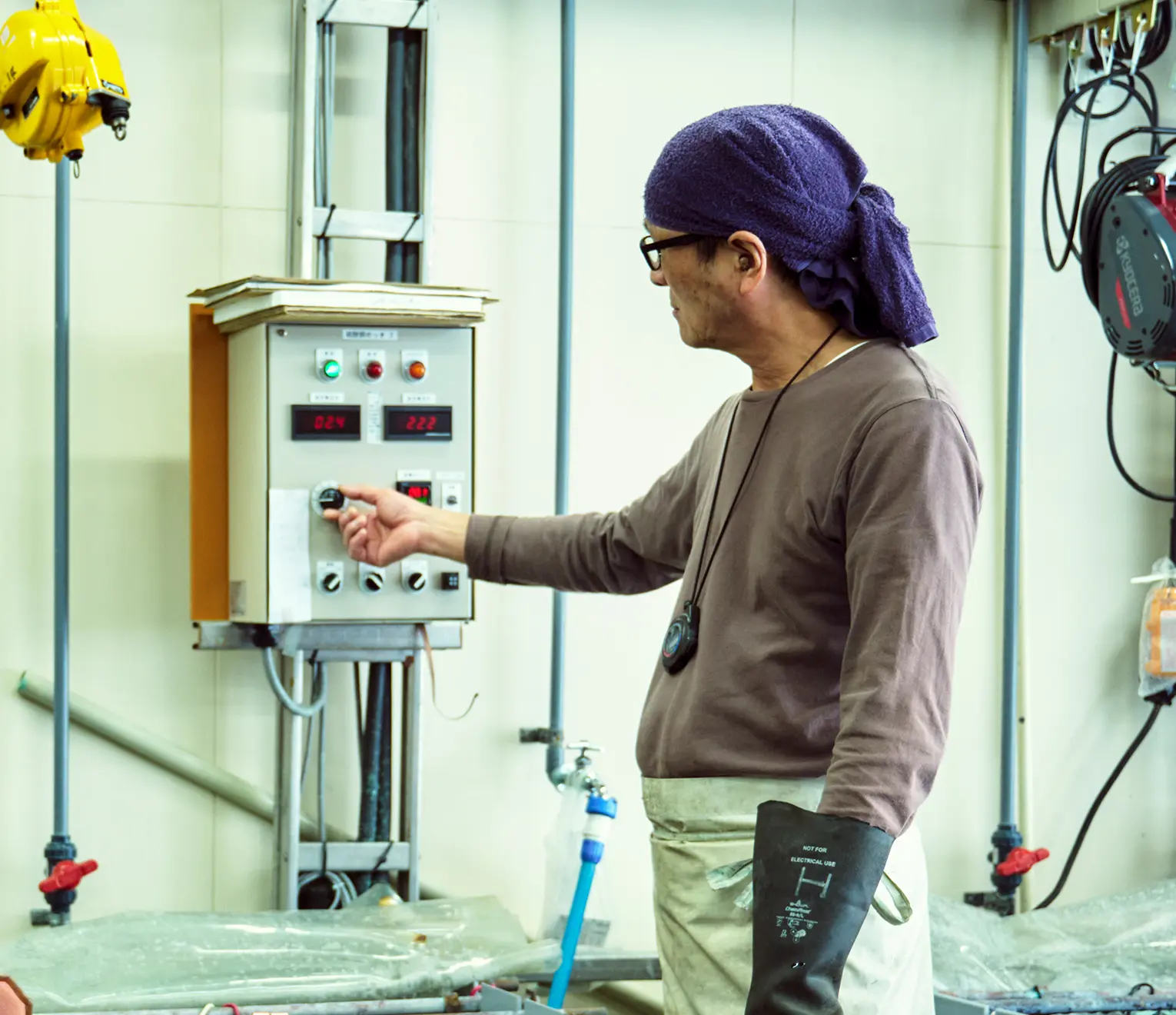
In the workshop, digital meters for setting the plating conditions glow against the walls. "There are standard values established by Ando Cloisonne, and adjustments are necessary if the actual values are either higher or lower," explains Hanma. The concentration in the liquid, temperature, and current density all interact, affecting the quality of the base material if any of these factors deviate too extremely.
Precise and meticulous management is required, but success doesn't always follow textbook conditions. "Even if we apply the theoretically correct current, the plating might end up thinner than expected, requiring us to apply more current. The ability to adjust this quickly comes from years of experience," Yoshida says, looking at Hanma with respect.

"I've relied on experience and intuition up until now, and that won't suffice going forward." Hanma reflects, It's rare for the cloisonne process to incorporate electroforming, a task Hanma has almost single-handedly managed since joining. He feels a daily urgency to document the knowledge based on his experience and intuition to ensure the technology does not end with his generation.
"I want the young generation to experience everything, easy or hard, even if they fail." The connection between those who wish to pass on traditional techniques and those eager to inherit them is possible thanks to the culture of nurturing and protecting artisans at Ando Cloisonne. "When I was younger, there was a part of me that didn't want to share the techniques I had developed with others," Hanma says with a smile, revealing the pride of a craftsman who has dedicated his life to his craft.

Artisans of Different Ages and Experiences Harbor Quiet Passion
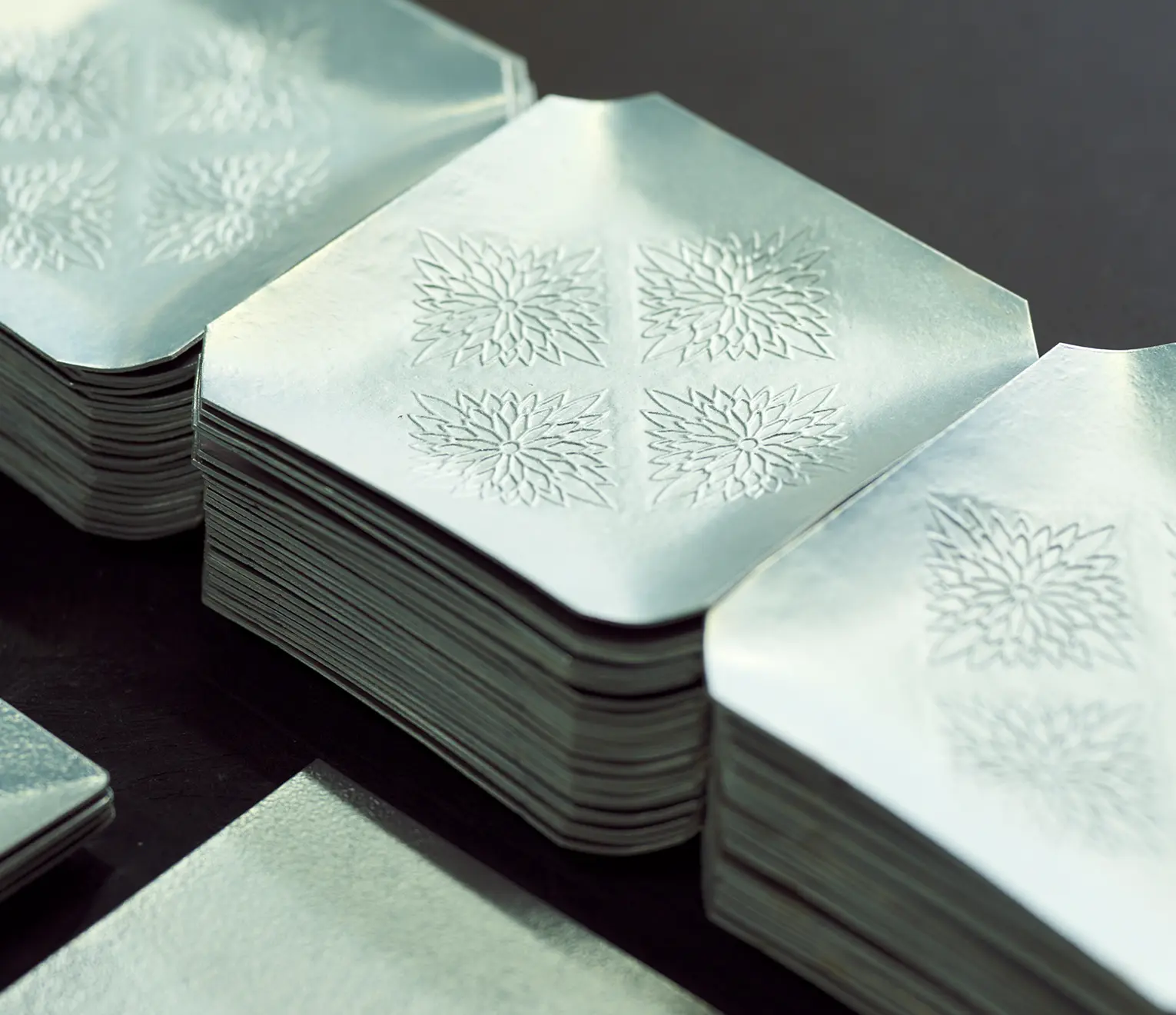
Unlike the traditional method of creating each base by hand, electroforming allows for the production of multiple pieces at once. "Cloisonne is often perceived as exclusive and expensive, but if we can make it affordably in large quantities, it might reach more people," Yoshida muses, her eyes sparkling with the possibility of imbuing cloisonne with new value beyond its classical image.
"Not just plates and vases, but I'd also like to try making cloisonne glass for car windows, something beautiful yet durable," Hanma shares. Even after a career spanning over 35 years, his enthusiasm for plating technology and new ideas never wanes. "I simply love this work, I am dedicated to plating through and through. I want the younger generation to love their work first and foremost, and to always approach it with a sense of curiosity."
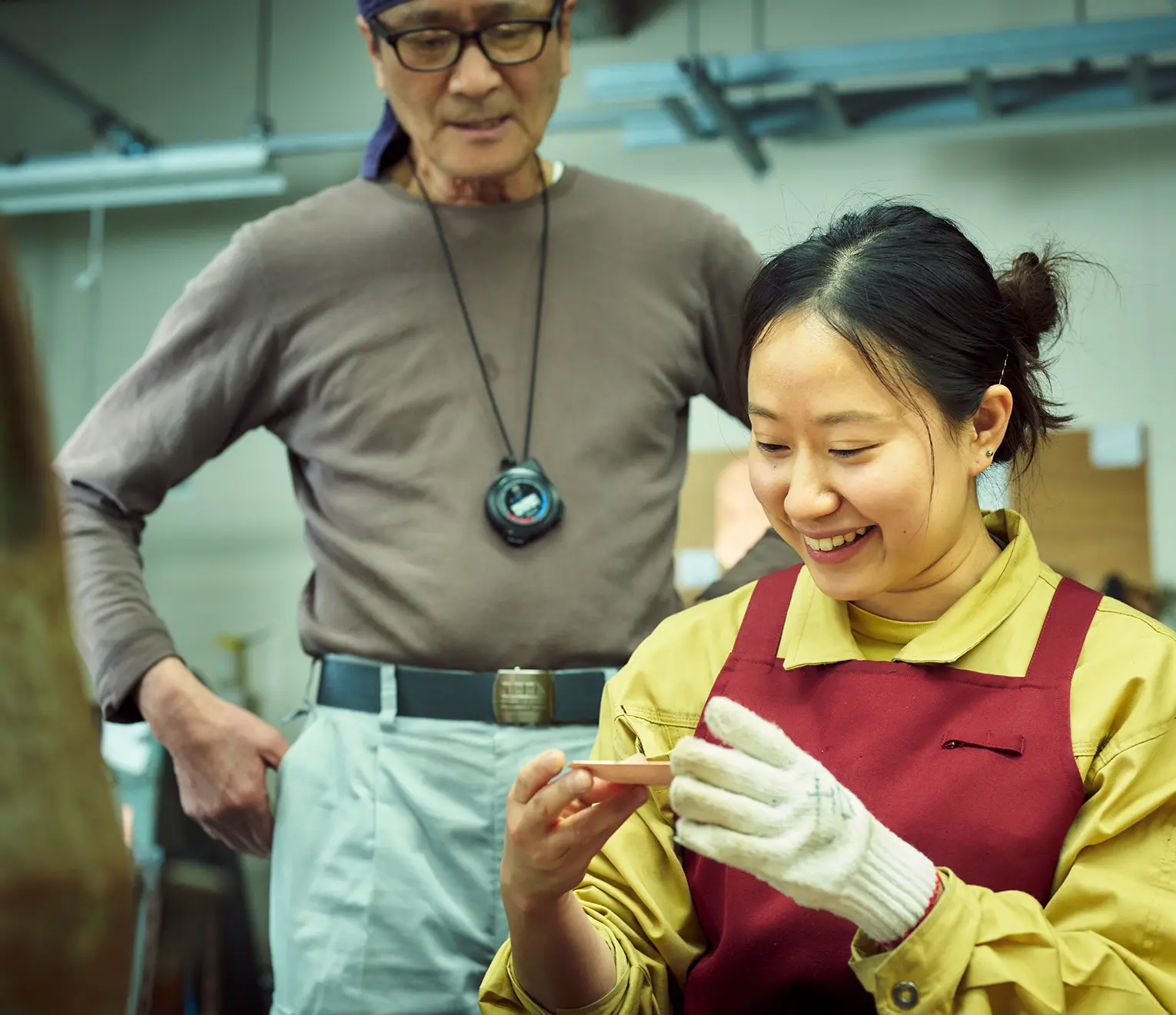
Electroforming, with its dependencies on the precise conditions of the plating solution, presents challenges, especially for creating three-dimensional items like large pots or deep dishes. Moreover, there are few precedents for using this technology in cloisonne. Despite acknowledging these difficulties, Hanma and Yoshida's discussions about the processes and prospects of electroforming are filled with excitement.
Dealing with chemical reactions and facing numbers and chemicals daily might sound impersonal at first. However, the earnestness of these artisans echoes the dedication seen in those who nurture pearls one by one or the toji (brewmasters) who brew sake with yeast—people who work closely with living organisms. Though they come from different starting points and generations, the quiet passion burning within them is likely to illuminate the future of cloisonne brightly.
-
Craftsman Dialogue 01

The Delicate Balance of Strength and Emotion Transforms Rugged Metal into Beautiful Curves
-
Craftsman Dialogue 03

Anticipating Completion, Standing Silver Wires: A Craft Nurtured by Skill and Experience
-
Craftsman Dialogue 04

Clad in Vivid Colors, Infused with Soul: Crafting Beauty that Resonates
